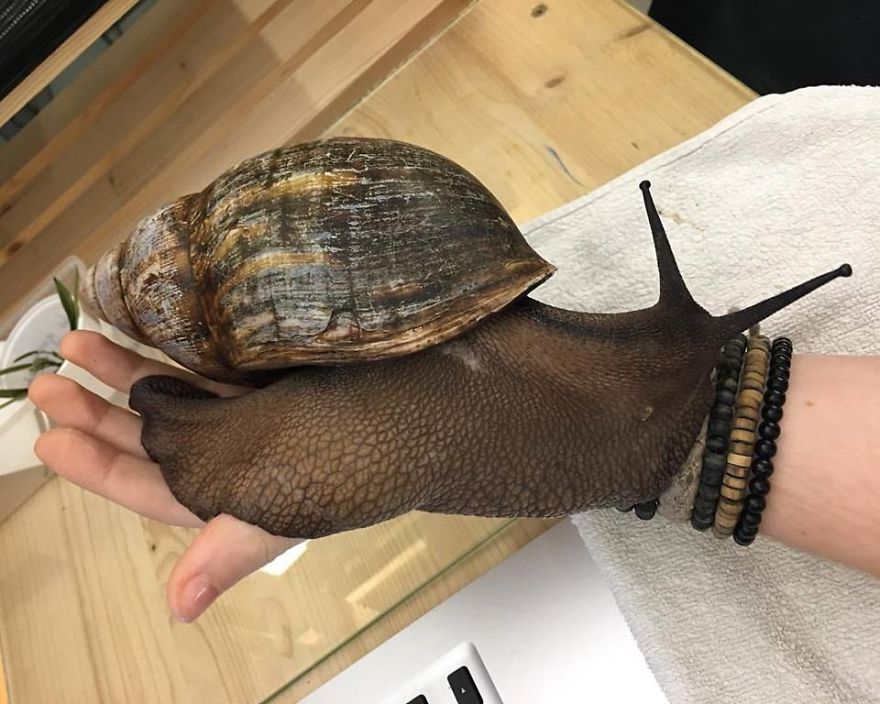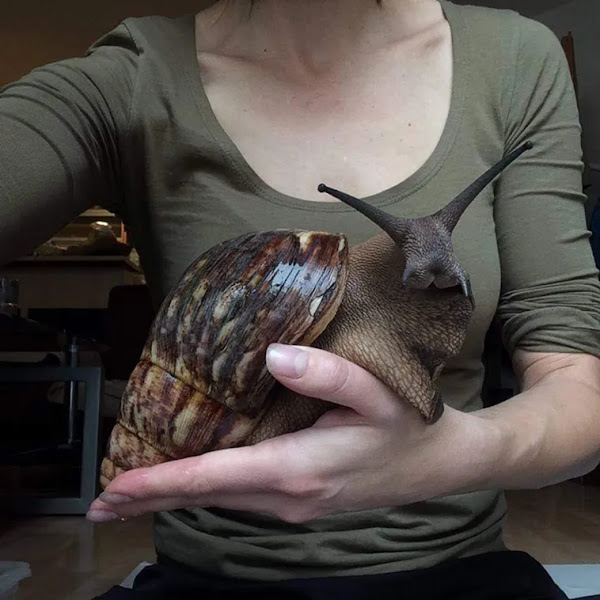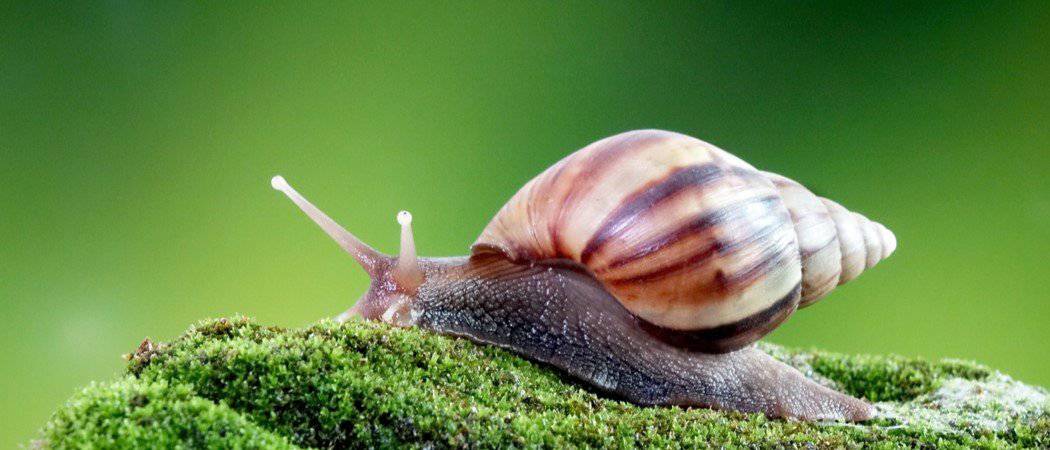The Giant African Land Snail is an extraordinary creature, boasting a size that is six times larger than a typical garden snail. It is capable of growing as long as a human arm, stretching from hand to elbow. This remarkable gastropod holds the distinction of being the largest land snail species in the world.

Its common name actually encompasses three giant species within the Achatinidae family: Achatina achatina, Archachatina marginata, and Lissachatina fulica.
What sets these snails apart is their continuous growth throughout their lifespan. Even after reaching adulthood, their growth does not come to a halt. While their growth rate may slow down a bit as they age, they continue to increase in size until the end of their lives. Fully matured adults typically attain a diameter of about 2.8 inches (7 cm) and a length of 7.9 inches (20 cm). However, there are instances of individuals growing even larger than these dimensions.
One notable case involves the largest recorded specimen, which was discovered during a snail safari expedition in Sierra Leone back in 1976. This colossal snail, named Gee Geronimo, measured an astonishing 1 foot and 3.5 inches (39.3 cm) when fully extended, with a shell length of 10.75 inches (27.3 cm). Its remarkable size earned it a place in The Guinness Book of Records as the largest snail on Earth. Such remarkable proportions highlight the awe-inspiring nature of these creatures.

In addition to their impressive size, Giant African Land Snails possess other intriguing characteristics. These snails have an average lifespan of about 10 years and possess remarkable reproductive capabilities. Being hermaphrodites, each snail has both male and female reproductive organs, allowing them to self-fertilize or engage in mating with other individuals. This reproductive versatility enables them to lay an impressive number of eggs—approximately 1200 per year.

While these snails originally hail from East Africa, they have managed to establish themselves in various regions worldwide. Their introduction to new territories is often accidental, occurring through unintended means such as escape from captivity or transportation on cargo ships. These snails have successfully adapted to different environments and habitats. While they exhibit a preference for humid forest areas, they can thrive along coasts, rivers, scrublands, wetlands, and even urban settings. Surprisingly, they also exhibit tolerance to colder climates by entering a semi-hibernation state to survive low temperatures.
In terms of diet, the Giant African Land Snail is a herbivorous creature with an extensive palate. Biologists have identified their ability to consume over 500 different types of plants. Their voracious appetite allows them to devour a wide range of vegetation. However, their diet is not limited to plants alone. These snails have been observed consuming cement and bones at times. This unusual behavior is believed to serve the purpose of fortifying their shells, as these materials provide a source of calcium.

Despite their intriguing qualities, the presence of Giant African Land Snails is not always welcomed. Their large appetite for various plants poses a significant risk to agriculture. These snails can cause extensive damage to crops, potentially leading to substantial economic losses. Moreover, their feeding habits extend beyond vegetation—snails have been known to consume plaster and stucco from structures, causing structural damage. However, the potential harm doesn't stop there. These snails can also pose a health risk to humans due to their association with the parasite known as rat lungworm. This parasite can cause meningitis, making it crucial.
The giant African land snail delights humans with its size and adaptability. Anyway, it's an animal worth seeing.
Read more: Mother dolphin's grief-stricken dance over her d.ead baby






